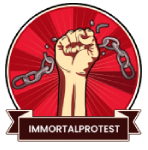
LGBTQ+ Rights Movement
The LGBTQ+ Rights Movement is a social and political movement advocating for the rights and acceptance of individuals who identify as lesbian, gay, bisexual, transgender, queer, or other sexual and gender minorities. The movement seeks to address discrimination, promote equality, and secure legal rights for LGBTQ+ individuals. Here are some key aspects of the movement:
### Historical Context
– **Early Activism**: The LGBTQ+ rights movement has roots that trace back to the early 20th century, with early advocacy for homosexual rights emerging in the 1920s and 1930s. Groups like the Mattachine Society and the Daughters of Bilitis were among the first to organise for LGBTQ+ rights in the United States.
– **Stonewall Riots (1969)**: A pivotal moment in the LGBTQ+ rights movement occurred at the Stonewall Inn in New York City, where patrons resisted a police raid. The riots sparked widespread activism and are often credited with igniting the modern LGBTQ+ rights movement.
### Key Issues
– **Legal Rights**: The movement has focused on various legal issues, including the decriminalisation of same-sex relationships, the right to marry, adoption rights, and anti-discrimination protections in employment, housing, and public accommodations.
– **Social Acceptance**: Beyond legal rights, the movement seeks to reduce stigma, promote acceptance, and foster understanding of LGBTQ+ individuals in society.
– **Trans Rights**: The rights of transgender individuals have become a significant focus, advocating for access to gender-affirming healthcare, protection against discrimination, and the right to self-identify.
### Significant Milestones
– **Marriage Equality**: One of the most significant achievements was the legalisation of same-sex marriage in various countries. In the United States, the Supreme Court’s decision in Obergefell v. Hodges (2015) legalised same-sex marriage nationwide.
– **Military Service**: The repeal of “Don’t Ask, Don’t Tell” in 2011 allowed LGBTQ+ individuals to serve openly in the U.S. military, marking a significant step forward for LGBTQ+ rights in the armed forces.
– **Pride Parades**: Celebrations like Pride Month and Pride parades have emerged as both commemorations of the struggles faced by LGBTQ+ individuals and celebrations of diversity and acceptance.
### Contemporary Challenges
– **Discrimination and Violence**: Despite progress, LGBTQ+ individuals still face discrimination, hate crimes, and violence, particularly against transgender individuals and LGBTQ+ people of color.
– **Legal Backlash**: In recent years, some regions have enacted laws that roll back protections for LGBTQ+ individuals, particularly concerning transgender rights, healthcare access, and participation in sports.
### Global Perspectives
– **International Movement**: The LGBTQ+ rights movement is global, with varying degrees of acceptance and legal recognition in different countries. Some nations have made significant advancements, while others maintain strict anti-LGBTQ+ laws.
The LGBTQ+ rights movement continues to evolve, addressing new challenges and advocating for a world where all individuals can live freely and authentically, regardless of their sexual orientation or gender identity.






